What to Do With Cooked Chinese Beef Shin
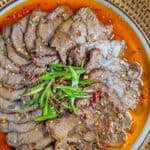
Today I'm sharing a 2-in-1 recipe which introduces a very popular way to cook beef in China. Beef shank is braised in a well-seasoned broth then sliced into thin pieces to serve. The rich stock is then kept as a master stock to be reused over and over for braising other ingredients.
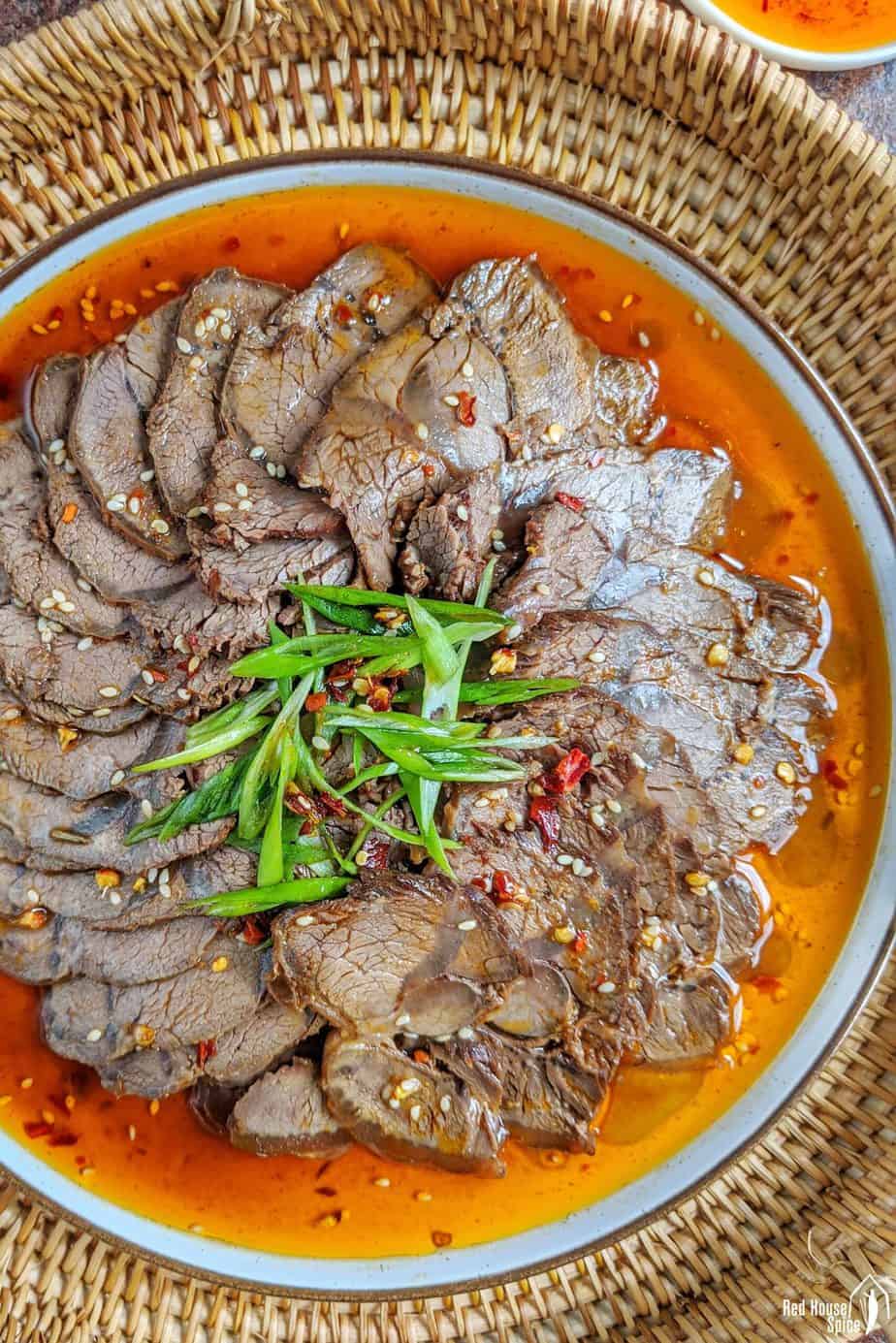
A popular dish for special occasions
Known as Jiang Niu Rou/酱牛肉 in Chinese, sliced beef shank is one of the most popular cold dishes served in Chinese restaurants. It's particularly common to have it as an appetiser at banquets or fancy meals for special occasions, such as Chinese New Year & other festivals. Many people who enjoy Bai Jiu/白酒 (a type of Chinese liquor) with food consider it a must-have to start a good meal.
Tender and packed with rich flavour, braised beef shank tastes great on its own or with a dressing/dipping sauce. Although the cooking process is quite time-consuming, it's a great dish to prepare ahead of time thus saving you lots of effort on the day when you're busy cooking up a storm for an important occasion.
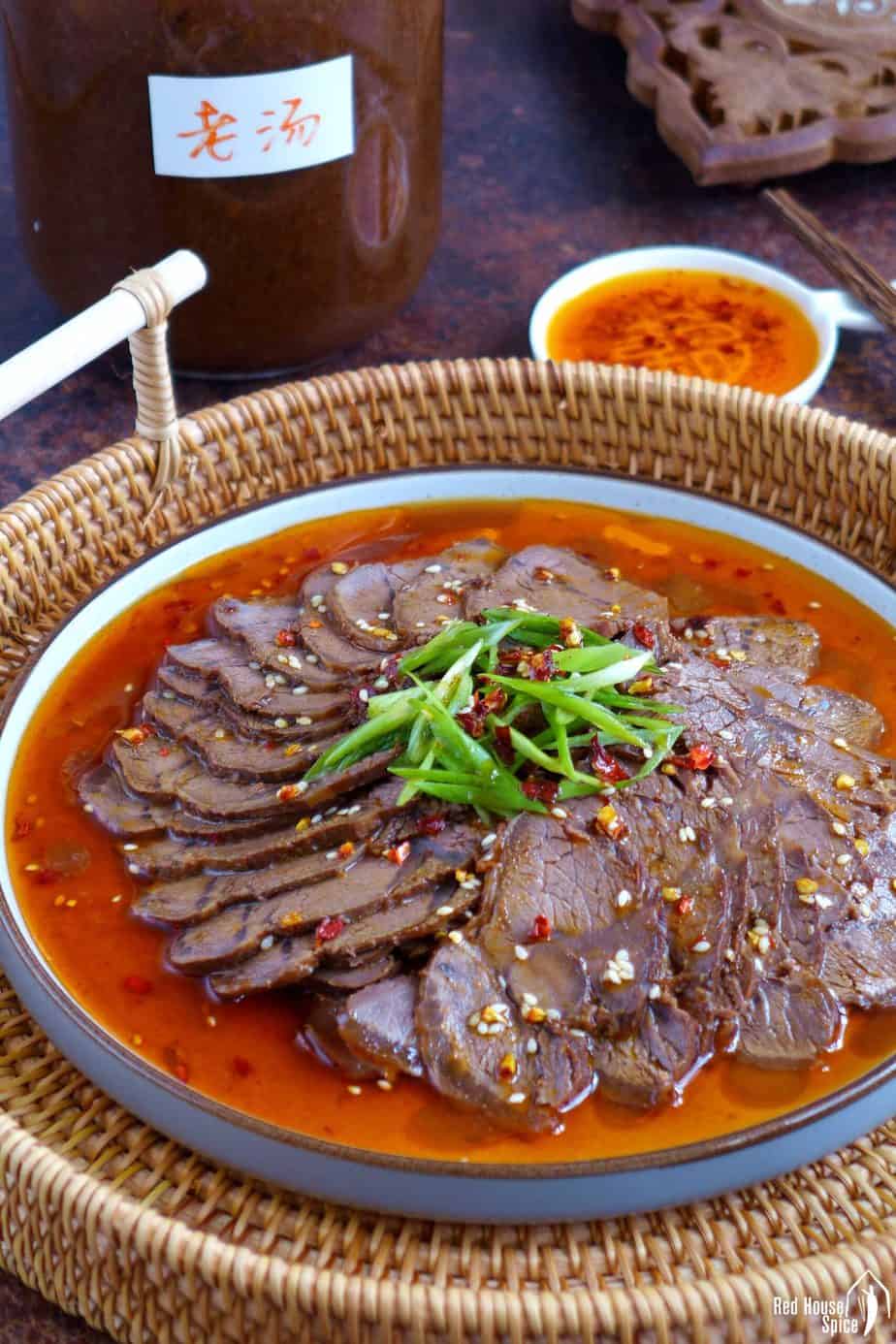
Keep the Reusable Master Stock
The wonderful by-product of this braised beef shank dish is the rich stock which has absorbed all the flavours from the meat, seasonings and spices. In Chinese, we call this delicious master stock Lao Tang/老汤 meaning "old stock" (it's also known as Lu Zhi/卤汁). Restaurant chefs and home cooks would reuse it again and again to make braised dishes.
Each time, it picks up more flavours from the newly added main ingredients (meat, boiled eggs, tofu, kelp, etc.), seasonings and spices. As it gets "older and older", its flavour becomes richer and more sophisticated. Absolutely a treasure to have in the kitchen!
The Cooking Procedure
Before I talk in detail about each step involved in making this dish, let me first give you a general idea of the cooking procedure:
- Soak the beef chunks in water to remove excess blood.
- Make a paste with soybean paste, fermented bean curd, soy sauce, etc, then coat the drained beef to marinate.
- Put marinated beef into a pot. Top with water then add herbs and spices. Leave to simmer for around one and a half hours.
- When completely cool, take out the beef and refrigerate to firm it up before slicing.
- Drain the stock to remove the spices. Store it for reuse later as a master stock.
Marinate the Beef with Intense Flavours
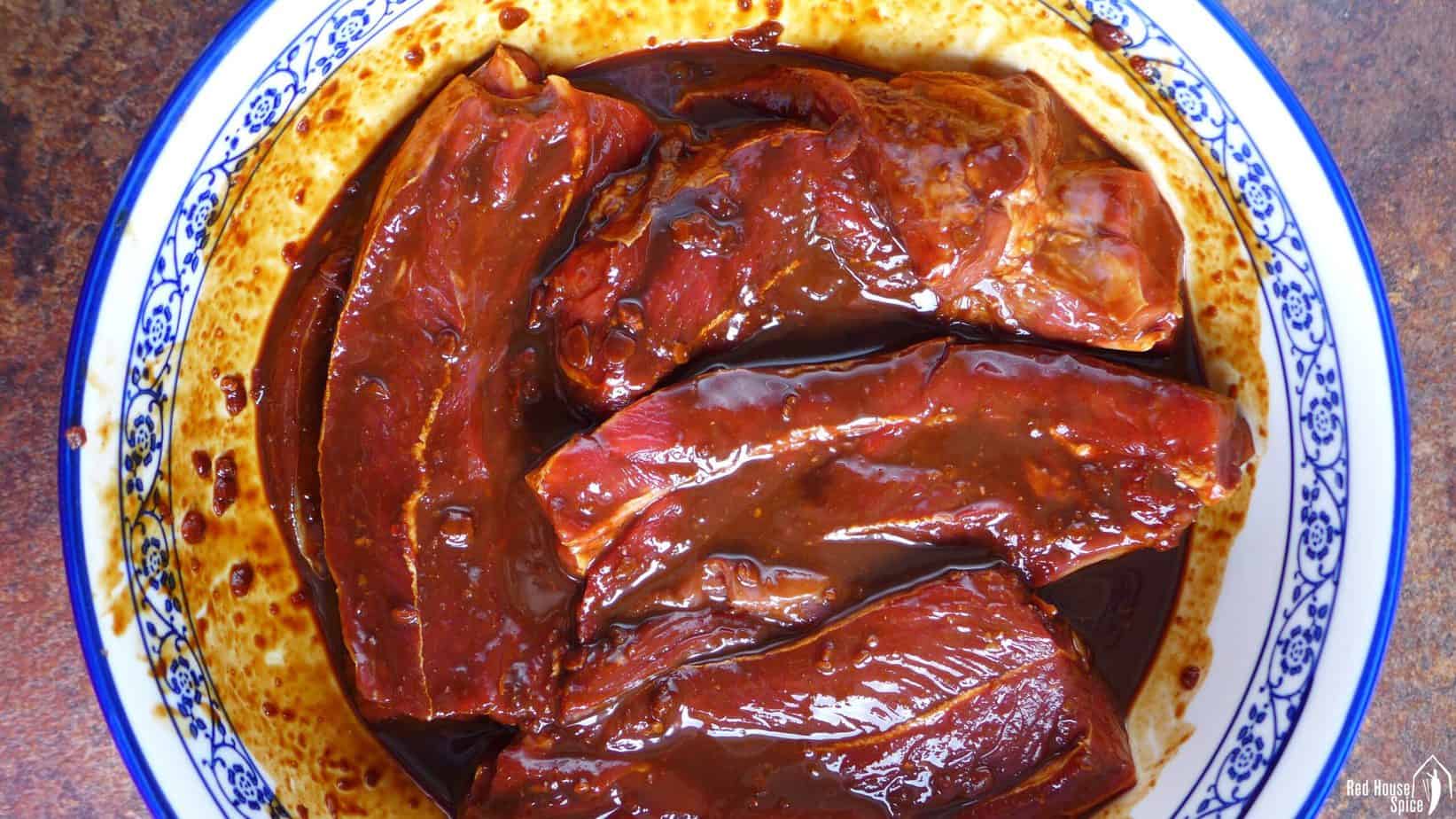
I always marinate the beef chunks before braising. This process helps the flavour to penetrate the meat. I use three Chinese condiments (soybean paste, fermented bean curd and soy sauce) to make a paste which coats and stays on the beef very well. I recommend you leave it to marinate overnight (or at least 4 hours). If you aren't familiar with these ingredients, here is some explanation and substitute ideas:
Soybean Paste
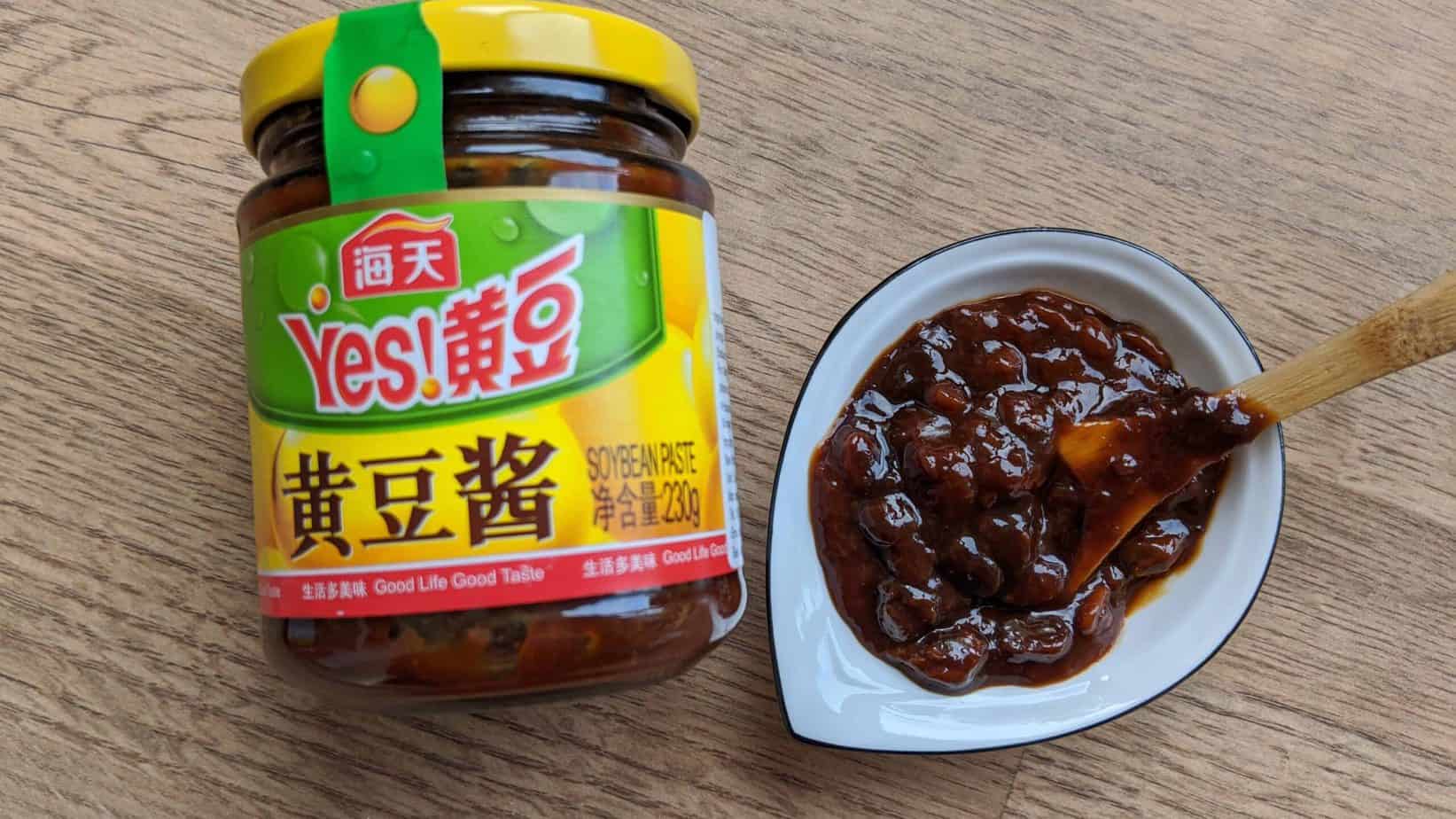
Chinese soybean paste (Huang Dou Jiang/黄豆酱) is a brownish-black paste made of fermented soybeans (It's different from Sichuan chilli bean paste which is made of broad beans). Widely used in northern Chinese cuisine, it's great for seasoning meat-based dishes, such as the pork sauce for Beijing Zha Jiang Noodles. If unavailable, you may replace it with sweet flour sauce (Tian Mian Jiang/甜面酱), another type of popular paste made of fermented wheat flour. Hoisin sauce can be a substitute too.
Fermented Bean Curd
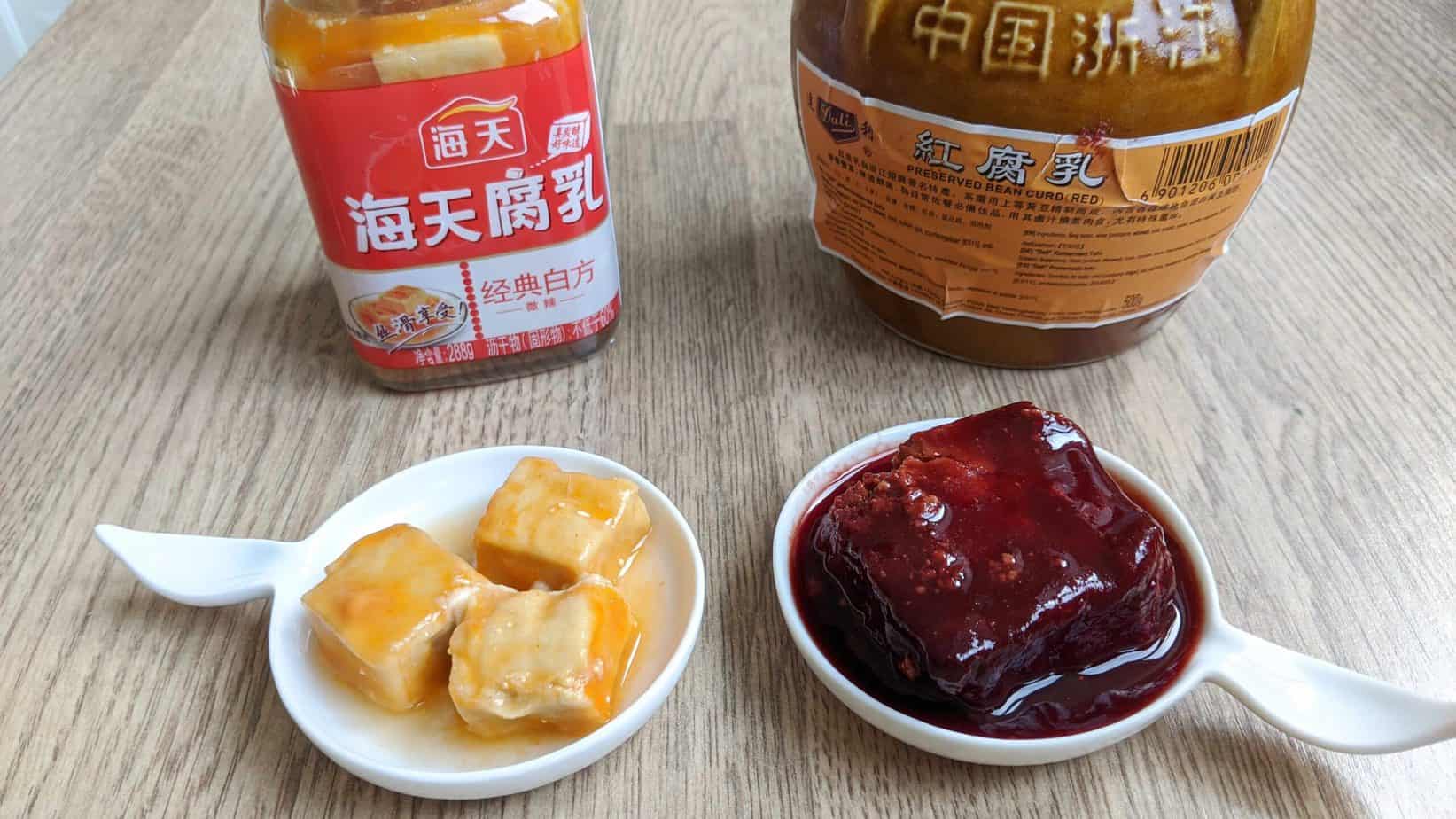
Known as Fu Ru/腐乳 in Chinese, fermented bean curd (or fermented tofu) is, in my opinion, one of the most underestimated Chinese condiments. Made from soybean, rice wine, salt and spices, it lends wonderful flavour to dishes with its complex taste: salty, umami, winey, aromatic with a hint of sweetness.
Usually, it comes in cubes soaked in a jar of brine. For braised beef shank, you can either use the red version (right in the image above) or the white one (left in the image above) with increased quantity. Unfortunately, there aren't any other ingredients which taste similar to fermented bean curd. So if you have trouble sourcing it, you will have to skip it (In this case, I suggest you add more salt to the stock in next step).
Braise the Beef for the Correct Time
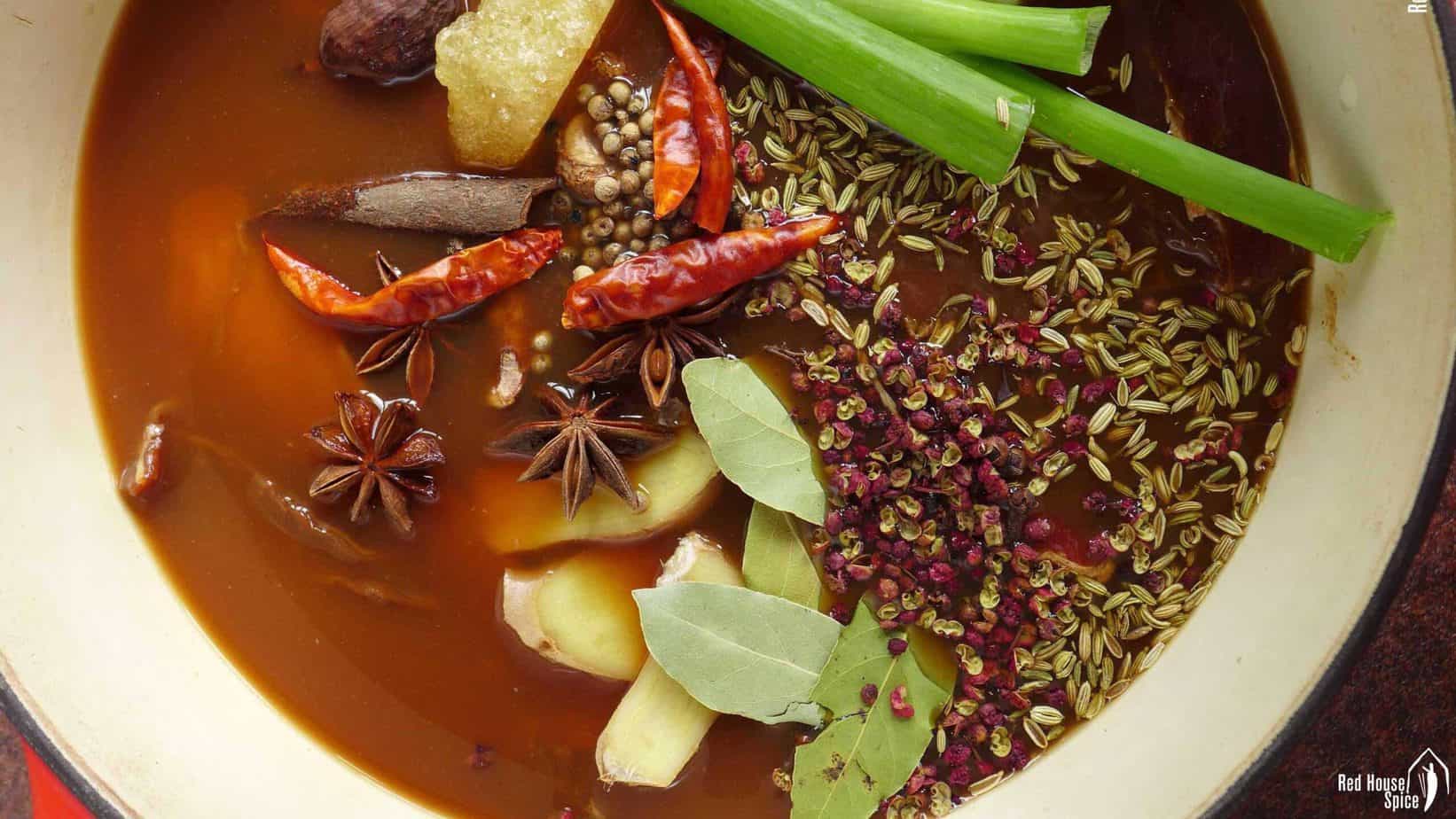
Once the beef is well-marinated, you're ready to cook it: Put the beef, along with all the marinade, into a pot (traditional Chinese clay pot or cast iron pot work the best). Top up with enough water to cover the meat. Add Shaoxing rice wine, ginger, scallions, sugar and a collection of spices (detail explained in the next section). Bring the water to a full boil. Then turn down the heat to low and leave to simmer with a lid on until the beef is cooked.
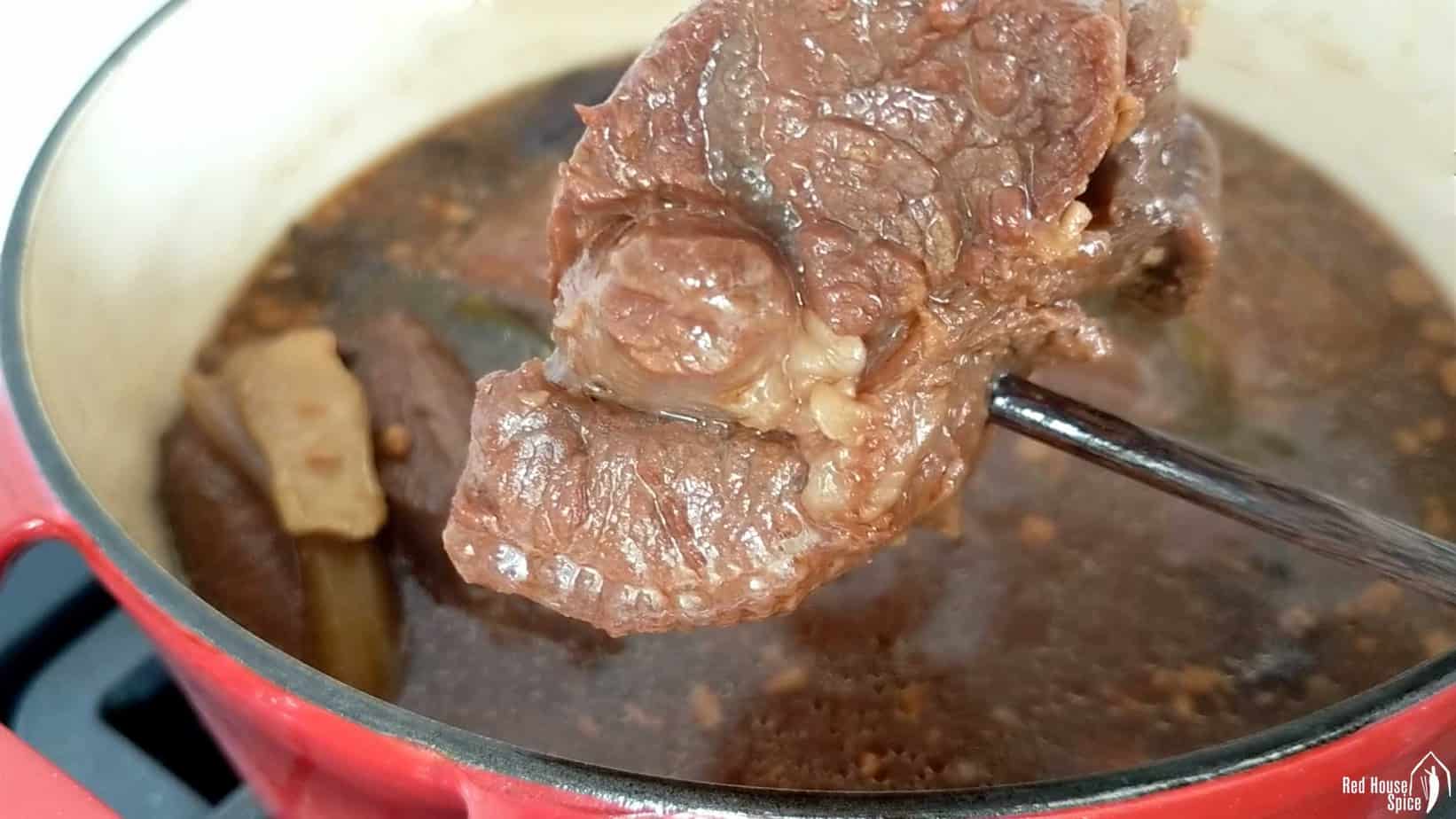
To check the doneness, use a chopstick to poke the centre of the biggest piece of beef. If you can insert it through but with a little resistant, it's time to turn off the heat. You don't want to overcook the beef as it won't easily stay in shape when slicing later on. For your reference, it took me 1h10m to cook it in a cast-iron pot with a tight lid.
A note:halfway through the braising process, you can check the saltiness by tasting the stock. If it's on the salty side, the beef should be just right. Otherwise, please feel free to add a little more salt.
What spices do you need
Spices are indispensable when it comes to making Chinese braised meat and master stock. They effectively lend sophisticated, multi-layer flavours to dishes. Traditionally, home cooks would also add some Chinese medicine for their tonic properties. I use 10 spices to make my braised beef shank. It's nice to add all of them, but please feel free to skip 2-3 spices if unavailable.

- Star anise
- Cassia cinnamon. It's also called Chinese cinnamon which refers to the aromatic, hard bark from a type of evergreen tree originating in southern China. You can replace it with Ceylon cinnamon (the common type widely used in Western cuisine) even though they create different flavours.
- Bay leaves
- Fennel seeds
- Sichuan pepper. Having a unique mouth-numbing effect, Sichuan pepper also has a citrus aroma and an overtone of pine. Please refer to my Sichuan Pepper Guide to learn how to select good quality ones when purchasing.
- Whole white pepper or black pepper
- Cloves. Follow the recommended quantity in my recipe. Excessive usage of cloves can result in unbalanced flavour.
- Tsao-ko (草果). It's known as Chinese black cardamon which has a smoky, camphor-like flavour. You can replace it with Indian black cardamon which is smaller and more wrinkled. Green cardamon can't be used as a substitute though.
- Dried sand ginger (沙姜). Also known as Shan Nai (山奈) in Chinese, it has a more aromatic flavour than regular ginger.
- Dried chillies. They give the stock a hint of spiciness. Adjust the quantity based on your own preference.
How to serve the beef
It makes a great appetiser
Once the beef chunks are cooked, leave them in the pot to cool down naturally. Then take them out and store in the fridge to firm up. Chilled beef is very easy to slice into thin pieces. Lay them on a plate to serve. As all the flavours have been absorbed into the meat, the beef slices taste wonderful on their own as an appetiser.
Alternatively, you can serve the dish with an easy sauce: Heat up about 3 tablespoon of the stock. Pour it over the beef along with some homemade chilli oil. Garnish with finely chopped scallions for visual appeal. Sometimes, I like heating up the sliced beef in the steamer for a few minutes. This way, it tastes tenderer.
Other delicious ways to serve
Apart from serving the beef slices on their own, I often use them in other dishes.
- As a topping in noodle dishes. For example, replace chicken with it in Sichuan Style Noodle Salad. Or use it along with the stock (dilute with water if necessary) to make yummy noodle soup, just like how I serve Spicy Beef Noodle Soup & Lanzhou Beef Noodle Soup.
- As a filling for Chinese bread/buns. For example, you can use it to replace braised pork in Rou Jia Mo (Chinese pork burger) or Gua Bao (Taiwanese pork buns). You can also wrap it in Chinese spring pancakes.
A note:store the leftover beef (unsliced) in the fridge for up to 4 days or in the freezer for 3 months. Defrost in the fridge before using.
How to reuse the master stock
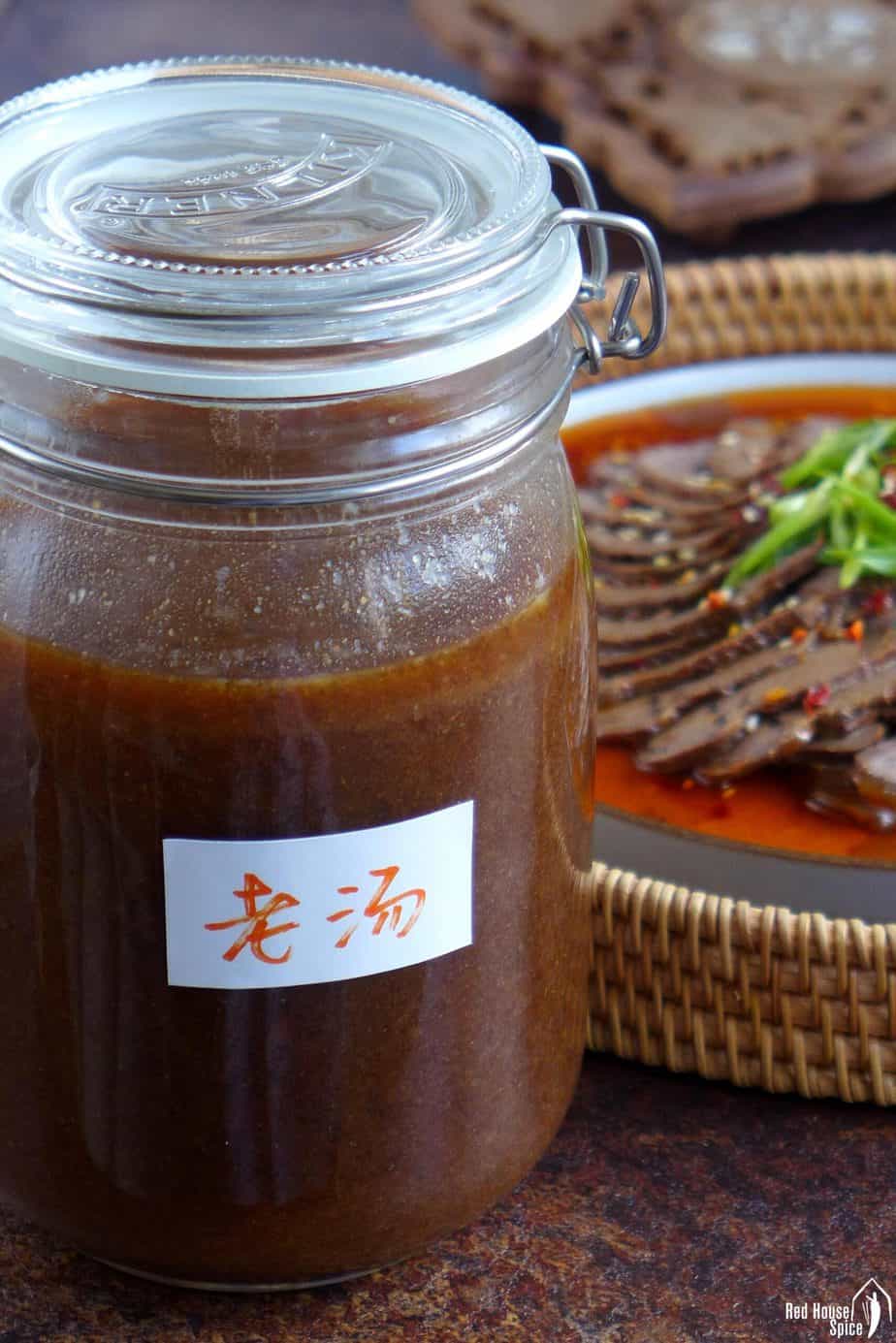
Don't discard the well-seasoned stock in which the beef was braised! You can reuse it to braise meat or other ingredients again and again. As I mentioned at the beginning of the post, this delicious master stock can work wonders in your kitchen for a long time. Here is how I store and reused it:
- Once the beef is taken out, drain the stock through a sieve. Discard the spices.
- Transfer the stock to a clean, air-tight jar/container. Store it in the fridge for up to 4 days or in the freezer for 3 months.
- Defrost in the fridge. Reuse it to braise beef or other ingredients. Pork (ribs/knuckles/trotters), chicken (drums/wing), tofu, kelp, boiled eggs are common choices. Add more water, seasoning and spices if necessary.
This procedure can be repeated indefinitely as long as you're hygiene-cautious at each step. As the flavour of the stock gets richer and richer over time, your braised dishes becomes more and more scrumptious.
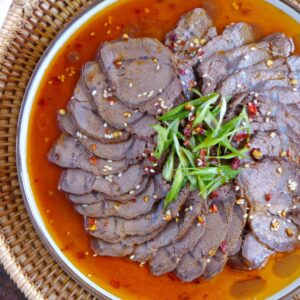
For marinating the beef
- 1500 g boneless beef shank (beef shin), 53oz
- 4 tablespoon soybean paste, see note 1 for substitutes
- 1 big piece fermented bean curd (Fu Ru/腐乳), or 4 small pieces, see note 2
- 4 tablespoon light soy sauce
- 1 tablespoon dark soy sauce
For seasoning the stock
- 2 tablespoon Shaoxing rice wine
- 5 slices ginger
- 2 stalks scallions, cut in sections
- 12 g rock sugar, or 1 tablespoon regular sugar
- 4 star anise
- 1 piece cassia cinnamon
- 4 bay leaves
- 1 teaspoon fennel seeds
- 1 tablespoon Sichuan pepper
- 1 tablespoon whole white pepper, or black pepper
- 8 cloves
- 1 Tsao-ko (Chinese black cardamon, 草果), optional
- 2 pieces dried sand ginger (沙姜), optional
- 4 dried chillies
- Salt, to taste
Soak the beef (optional)
-
Wash beef shank then cut each piece lenghthways once.
-
Put into a large bowl. Pour in water (enough to cover the meat completely). Leave to soak for 1 hour then drain (this is to extract excess blood).
Marinate the beef
-
Add soybean paste, fermented bean curd, light soy sauce & dark soy sauce to a bowl. Mash the bean curd with a spoon and mix well.
-
Pour the marinade onto the drained beef. Rub to coat evenly. Leave to rest for at least 4 hours or overnight.
Cook the beef
-
Put the beef, along with the marinade sauce, into a pot. Top with about 750 ml/3 cups of water (It should be enough to cover the meat completely. Please feel free to adjust).
-
Add Shaoxing rice wine, scallions, ginger, sugar and all the spices.
-
Bring it to a full boil then turn the heat to the lowest. Cover with a lid and leave to simmer for about 1½ hours (see note 3).
-
Halfway through, taste the stock to check the saltiness. If it's on the salty side, the beef should be just right. Otherwise, add a little salt.
-
To check the doneness, poke the centre of the biggest piece of the beef with a chopstick. You should be able to insert it through with a little resistant.
-
Let the beef cool down in the stock naturally. Then transfer the beef to a container. Refrigerate until completely firm.
-
Use a sieve to drain the stock (discard the spices) and keep in the fridge for later use.
Serve the beef (see note 4 for more options)
-
Cut the beef into thin slices then lay on a plate. Heat up a little stock in a saucepan. Pour it over the beef. Add chilli oil and scallions. If you wish to serve it warm, steam the sliced beef for about 3 mins or so.
-
This recipe makes about 4 platefuls. Store the rest of the beef chunks in the fridge for up to 4 days or in the freezer for 3 months. Defrost in the fridge before using.
How to reuse the stock
-
The beef stock can be reused as a master stock for braising meat, boiled eggs, tofu, kelp, etc. Add more water, seasonings & spices if necessary.
-
After each use, drain the stock very well and remove all the solid pieces left in the liquid. Store in the fridge or freezer for up to 4 days or in the freezer for 3 months. Defrost in the fridge before using.
1. Chinese soybean paste (Huang Dou Jiang/黄豆酱) is a brownish-black paste made of fermented soybeans. If unavailable, you may replace it with sweet flour sauce (Tian Mian Jiang/甜面酱) which is made of fermented wheat flour. Hoisin sauce can also be used as a substitute.
2. Fermented bean curd is known as Fu Ru/腐乳 in Chinese. You can use either the red version or the white version (read more in the post above). Unfortunately, there aren't any other ingredients which taste similar. So you will have to skip it if unavailable. In this case, I suggest you add more salt to the stock in the next step.
3. The cooking time required may vary depending on the size of the beef, the power of the heat and the cookware you use. Adjust if necessary.
4. Other serving options:
- As a topping in noodle dishes. For example, replace chicken in Sichuan style noodle salad. Or use it along with the stock (dilute with water if necessary) to make a noodle soup.
- As an alternative filling for these dishes: Rou Jia Mo (Chinese pork burger), Gua Bao (Taiwanese pork buns), Chinese spring pancakes.
Show me your dish or ask me questions @red.house.spice
Source: https://redhousespice.com/braised-beef-shank/
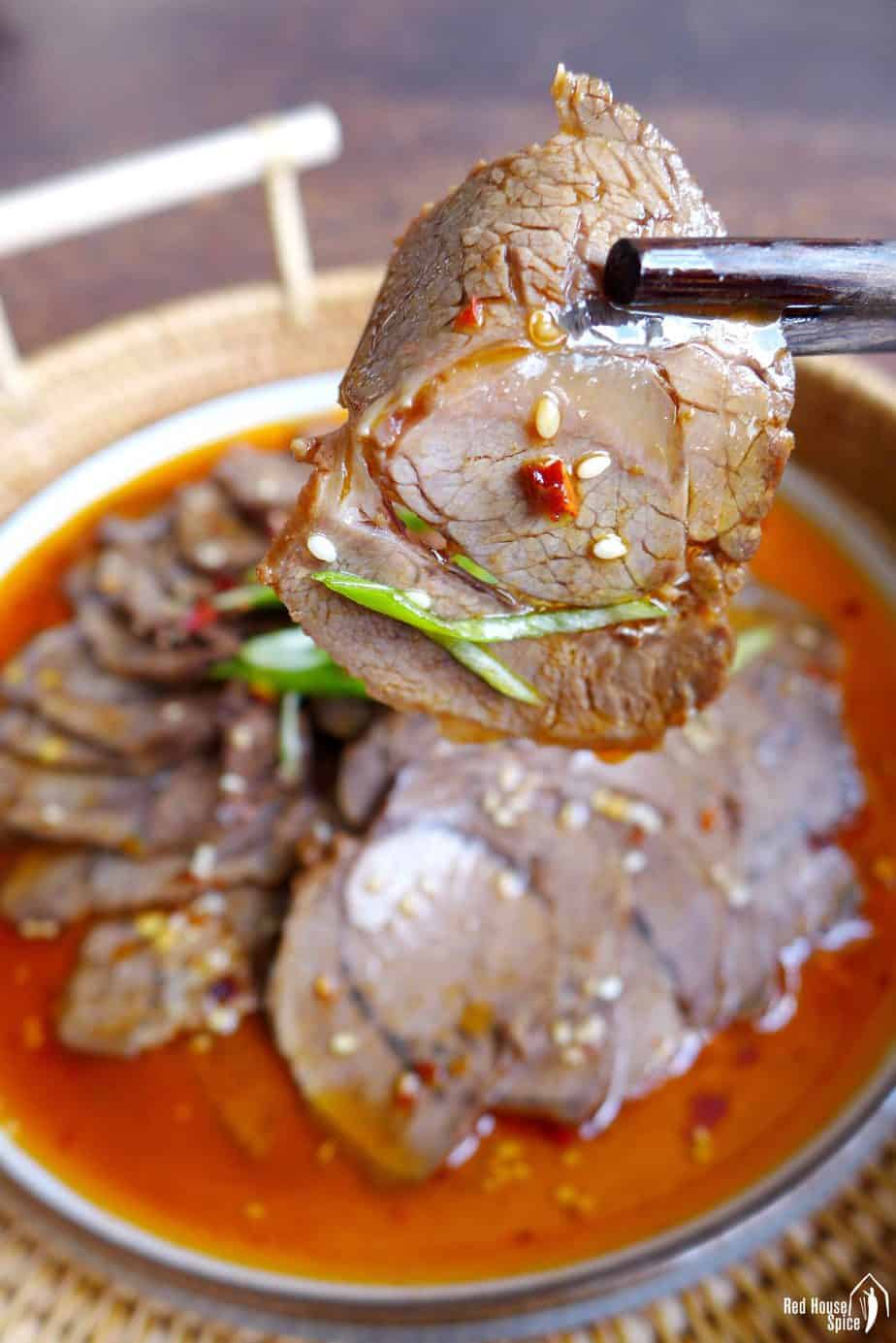
0 Response to "What to Do With Cooked Chinese Beef Shin"
Post a Comment